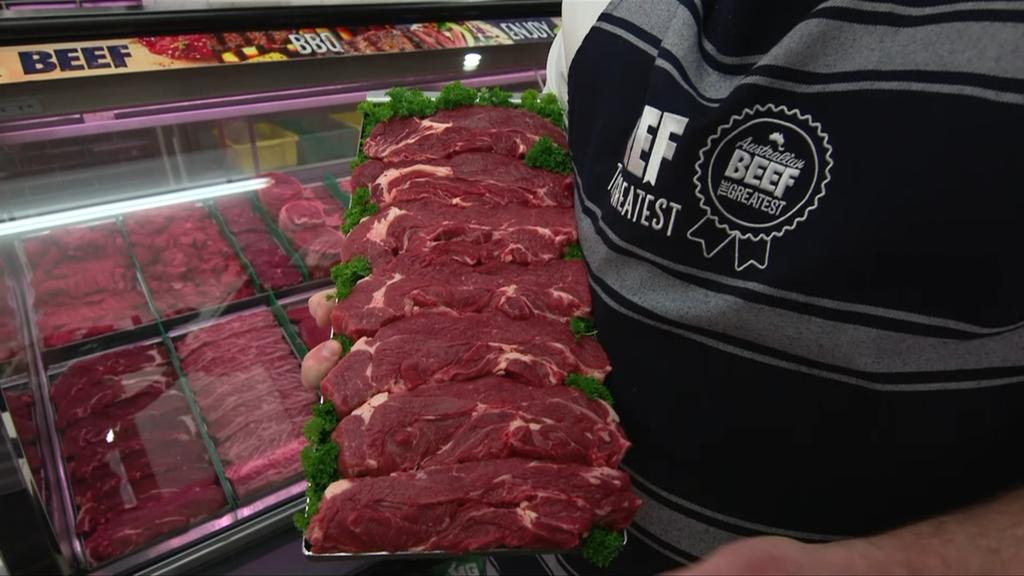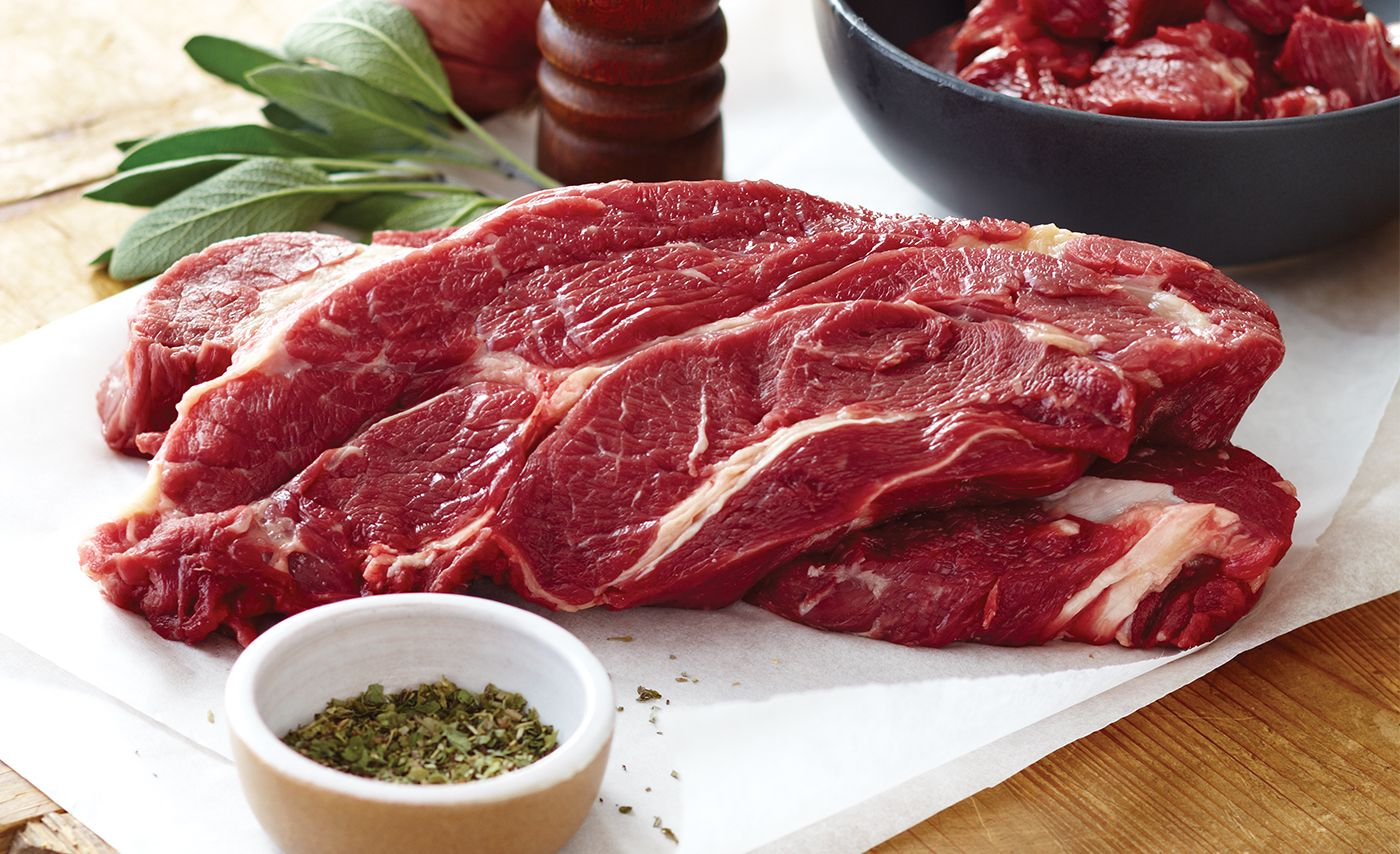REVEALED: The best value cut of beef – save money without sacrificing flavour!
- Replies 15
No, it's not just you, folks...
We're all feeling the effects of the recent surge in typical household expenses, which have increased dramatically in recent weeks.
After two rough years of uncertainty because of the pandemic, Aussie families now have to deal with the added financial stress of prices going up almost everywhere in our daily lives.
The Consumer Price Index reveals that the cost of food has increased by 4.3% over the previous 12 months leading up to March. You've probably noticed that the cost of some fresh meat and produce items at your neighbourhood supermarket has also gone up.
For meat lovers, however, the news is worse as lamb prices have increased by almost 7% and beef prices have increased by almost 9% over the past year, respectively, according to data from a Thomas Elder Markets analysis.

Even in the face of rising meat prices, there are ways to stretch your dollar further. Credit: Sunrise.
In a previous article, we discussed one strategy that more and more consumers are doing to stretch their weekly grocery budget, which is to "skip the middleman" and buy their meat directly from online butchers.
But we understand that not everyone can use this method, particularly those who are like our member @Ricci who mentioned they don't consume enough meat to make buying online practical and don't have anyone to share them with.
So, what other alternatives are there to stretch your grocery budget even further?
The majority of us here still purchase our meat directly from our local neighbourhood butcher, and as it turns out, doing so is still one of the most practical and reasonable ways to lower grocery costs. (This will still be different depending on where you live, though.)
But to make your meat budget stretch further, we also have to be 'smart' about which cuts to buy.
According to Craig Munro, a butcher at Munro's Quality Meats, given how chilly and cold it is right now, stews and casseroles are perfect for this time of year.
He suggests buying the chuck steak, also referred to as the "7-bone steak," which is inexpensive and perfect for one-pot winter meals.
"When we so cook this, we braise it, it will break down so those muscle fibres will break down and make it really tender and it will enhance the flavour of the sauce as well," he added.

Chuck steak can be braised, pot-roasted, or minced for burgers or meatballs due to its rich flavour. Credit: Recipes.co.nz.
Although the least expensive cuts of meat, especially beef, are frequently more flavorful than their more expensive counterparts, they are typically the toughest (or hardest to cook and eat).
As we mentioned earlier, one of the more affordable meat cuts is chuck steak with the bone in. Chuck steaks are cut from the area of the cow's shoulder just below the neck. Because of their rich flavour, they are excellent for braising, pot roasting, or minced to make burgers or meatballs.
Although they originate from the same region, blade steaks on the other hand are cut across the blade to remove the connective tissue. Blade steaks are frequently suggested over fillets, sirloins, or rib eyes because of their rich flavour and affordable price, as well as the balance of meat and fat in the marbling.
In addition to the chuck steak, YourLifeChoices lists the brisket, skirt, flank, silverside, shin, leg or shank, and top rump as other reasonably priced yet flavorful beef cuts.
If you've already purchased a chuck steak from your neighbourhood butcher, it's time to start thinking about how you're going to prepare it.
Check out the video below for instructions on how to transform that inexpensive chuck steak into a faux five-star meal for you or your loved ones:
Credit: ChefSteps.
What do you think, folks? And when it comes to purchasing meat from your local butcher, do you have any go-to items? Please share them with us in the comments section below!
We're all feeling the effects of the recent surge in typical household expenses, which have increased dramatically in recent weeks.
After two rough years of uncertainty because of the pandemic, Aussie families now have to deal with the added financial stress of prices going up almost everywhere in our daily lives.
The Consumer Price Index reveals that the cost of food has increased by 4.3% over the previous 12 months leading up to March. You've probably noticed that the cost of some fresh meat and produce items at your neighbourhood supermarket has also gone up.
For meat lovers, however, the news is worse as lamb prices have increased by almost 7% and beef prices have increased by almost 9% over the past year, respectively, according to data from a Thomas Elder Markets analysis.
Even in the face of rising meat prices, there are ways to stretch your dollar further. Credit: Sunrise.
In a previous article, we discussed one strategy that more and more consumers are doing to stretch their weekly grocery budget, which is to "skip the middleman" and buy their meat directly from online butchers.
But we understand that not everyone can use this method, particularly those who are like our member @Ricci who mentioned they don't consume enough meat to make buying online practical and don't have anyone to share them with.
So, what other alternatives are there to stretch your grocery budget even further?
The majority of us here still purchase our meat directly from our local neighbourhood butcher, and as it turns out, doing so is still one of the most practical and reasonable ways to lower grocery costs. (This will still be different depending on where you live, though.)
But to make your meat budget stretch further, we also have to be 'smart' about which cuts to buy.
According to Craig Munro, a butcher at Munro's Quality Meats, given how chilly and cold it is right now, stews and casseroles are perfect for this time of year.
He suggests buying the chuck steak, also referred to as the "7-bone steak," which is inexpensive and perfect for one-pot winter meals.
"When we so cook this, we braise it, it will break down so those muscle fibres will break down and make it really tender and it will enhance the flavour of the sauce as well," he added.
Chuck steak can be braised, pot-roasted, or minced for burgers or meatballs due to its rich flavour. Credit: Recipes.co.nz.
Although the least expensive cuts of meat, especially beef, are frequently more flavorful than their more expensive counterparts, they are typically the toughest (or hardest to cook and eat).
As we mentioned earlier, one of the more affordable meat cuts is chuck steak with the bone in. Chuck steaks are cut from the area of the cow's shoulder just below the neck. Because of their rich flavour, they are excellent for braising, pot roasting, or minced to make burgers or meatballs.
Although they originate from the same region, blade steaks on the other hand are cut across the blade to remove the connective tissue. Blade steaks are frequently suggested over fillets, sirloins, or rib eyes because of their rich flavour and affordable price, as well as the balance of meat and fat in the marbling.
In addition to the chuck steak, YourLifeChoices lists the brisket, skirt, flank, silverside, shin, leg or shank, and top rump as other reasonably priced yet flavorful beef cuts.
If you've already purchased a chuck steak from your neighbourhood butcher, it's time to start thinking about how you're going to prepare it.
Check out the video below for instructions on how to transform that inexpensive chuck steak into a faux five-star meal for you or your loved ones:
Credit: ChefSteps.
What do you think, folks? And when it comes to purchasing meat from your local butcher, do you have any go-to items? Please share them with us in the comments section below!







